
The information on this page will help you be proactive about your safe driving skills. Click on the boxes below to find practical tools, tips, and resources from either Safe Mobility for Life or our partners. These resources offer practical ways for you to improve safe driving skills and maintain mobility independence.
To stay informed on the latest tips and resources to keep you safe, mobile, and connected to your community using all modes, please sign up for our Insider Newsletter!
A driving assessment can help you determine whether it is wise to continue driving. There are several skills assessment tools, including an evaluation by professionals or self-assessment forms, which can gauge how well you are driving.
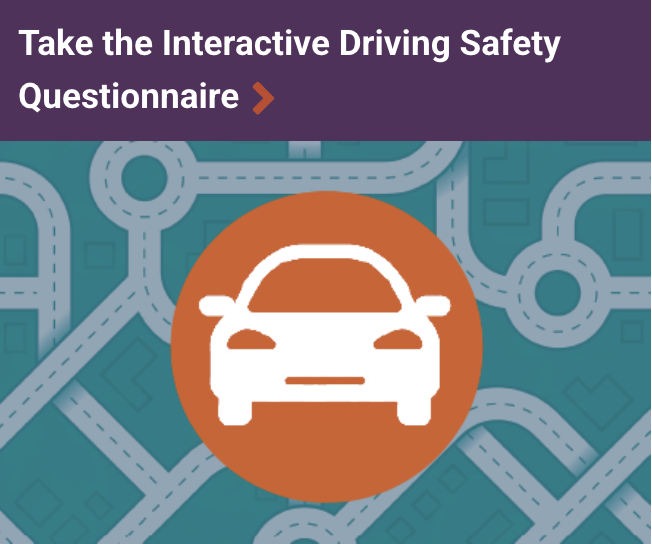
With support from the National Highway Traffic Safety Administration (NHTSA), AGS’s Health in Aging Foundation released the Older Driver Safety Questionnaire. This interactive questionnaire will ask you questions about driving safety that you can answer either for yourself or for someone else. You will then be provided with suggestions based on your answers which you may want to share or discuss with your healthcare provider.
Please note: this questionnaire is meant to serve as a guide only. It is not intended to be a substitute for professional medical advice, diagnosis, or treatment. Be sure to speak to your healthcare provider about any concerns you may have about the questionnaire or your results, or any questions you may have regarding a medical condition.
You can take the interactive Driving Safety Questionnaire or find more safety tips for older drivers at the HealthinAging.org website.

The Fitness-To-Drive Screening Measure© (FTDS) is a web-based tool for caregivers and/or family members of older drivers and clinicians to identify at-risk older drivers. Caregivers and/or family members who have driven with the driver in the last three months, can rate a driver's difficulties with 21 driving skills, through this on-line screening. The online version of the FTDS is available for rating drivers in both the United States and Canada.
Click on the image to learn more on FTDS tool.
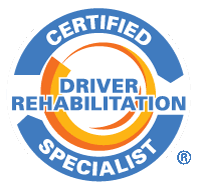
Driver Rehabilitation Specialists (DRS) are health care professionals with special training in driver rehabilitation who offer driving evaluations both in an office and in a vehicle. This allows them to assess your physical, visual, and cognitive abilities as a driver.
A DRS can evaluate your driving skills, recommend rehabilitation, and suggest vehicle or route modifications, such as avoiding left turns, to help you continue driving safely.
You can search for a DRS near you through the Association for Driver Rehabilitation Specialists’ website.
CarFit
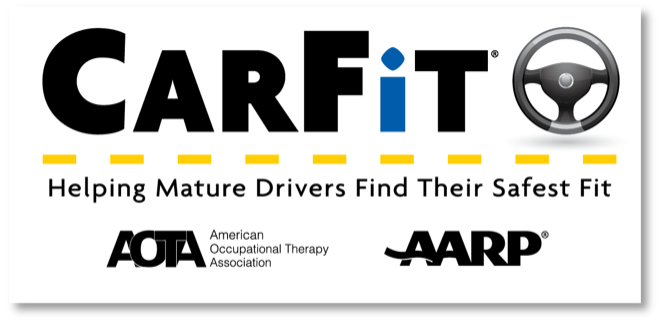
CarFit can help you improve your “fit” in your personal vehicles for safety and comfort. The program promotes conversations about safe driving and provides information on community-specific resources that enhance safety and increase mobility. Attending a CarFit event is a fun and easy way to be proactive about staying safe on the road. Learn more about CarFit on our Vehicle page.
Driver Safety Courses

If you are a Florida driver 55 years of age or older, you are eligible to complete an approved driver safety course and could receive a discount on your car insurance for three years. These classes are an opportunity to maintain your safe and defensive driving skills and learn techniques to compensate for age-related changes.
Florida Highway Safety and Motor Vehicles provides a list of Mature Driver Discount Insurance Courses with registration information on their website.
It is important to learn about tips and resources available to help you reduce risks and maintain your safe driving abilities. This section will share information and resources on how you can enhance your safe driving skills.
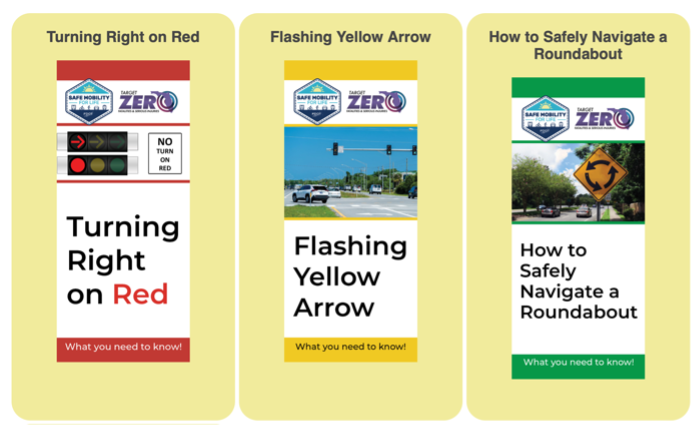
The Florida Department of Transportation (FDOT) designs roadways with countermeasures that improve safety and enhance mobility for road users of all ages and abilities.
The Safe Mobility for Life Coalition developed the Roadway Safety Tip Card series to help you learn about the following signs and traffic control devices that you may not be as familiar with:
- Flashing Yellow Arrows
- Right Turn on Red
- Roundabouts
- Wrong-Way Driving on the Interstate
Visit the Resource Center to access these tip cards so that you can navigate these situations safely and legally.
FDOT and its partner agencies offer a variety of services that aid those traveling on Florida’s roadways. Knowing about these options and how to access them is an excellent way to be proactive as a driver.

The Florida 511 Traveler Information System (Florida 511) is a public service developed by FDOT to provide drivers, commuters, truck drivers, residents, and visitors the latest traffic information and urgent alerts. These alerts include notifications about traffic incidents, road closures, and suggested alternate routes.
To receive traffic updates from Florida 511:
- Download the free Florida 511 Mobile app available on Google Play or the Apple App Store.
- Visit FL511.com for interactive roadway maps showing traffic congestion and crashes, travel times, and traffic camera views. Website information is available in English and Spanish.
- Sign up for a “My Florida 511” account at FL511.com to create custom routes and register for email and text alerts.
- Follow your region’s FL511 account on Twitter.

FDOT’s Road Ranger Service Patrol provides incident management response services and limited no-cost highway assistance to improve highway safety for the emergency responders and the public.
The Road Ranger Service Patrol consists of vehicles that patrol congested and high incident areas along urban freeways and are equipped to assist drivers (e.g., booster cables, jacks, sand, fire extinguishers, first aid kits, reflective cones, etc.).
Dial *347 (FHP) to request a Road Ranger or if you are experiencing or witnessing an emergency.

The best time to prepare for an emergency is now, when you are calm and have time to get everything in place. If you have a plan in place and news comes of an approaching storm or other hazard, you will be ready to take care of yourself and your family. Evacuation may be the safest option when facing severe weather events, which is why knowing where you will go and how you will get there is key to a safe and successful emergency transportation plan.
The Florida Division of Emergency Management has tools and information to help you plan and prepare for natural disasters, learn more floridadisaster.org/planprepare. There is also a special needs registry to assist people with physical, mental, cognitive, or sensory disabilities. Prior to any emergency, contact your county emergency management office to see if you are eligible for this registry.
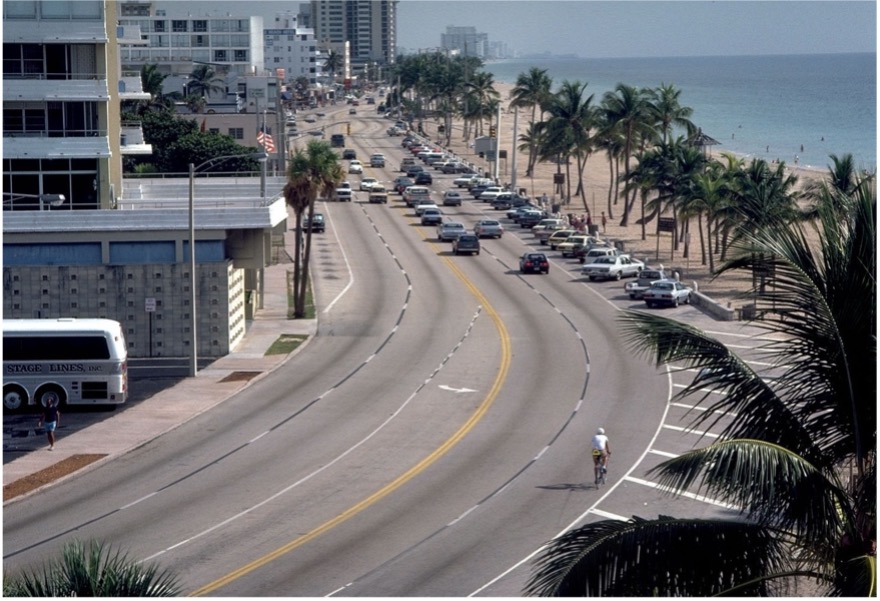
Not all road users drive cars. Many people walk, bike, and drive other vehicles like motorcycles and golf carts. Expect to encounter these other road users anytime and anywhere and do the following:
- Watch carefully for people walking, biking, and driving motorcycles, especially in bad weather and at night when they are harder to notice.
- Stop at the stop bar before making a right turn at a red light or stop sign. People walking and biking may be using crosswalks at these intersections.
- Scan the road ahead to look for other drivers or people walking or biking who may cross into your intended path.
- When approaching a crosswalk, drive slowly and be prepared to stop.
- Always stop for people in crosswalks. Stop far enough in advance so that drivers in the other lanes can also see the person in time to stop.
- Do not pass other drivers who are stopped for people walking.
- Always look out for people walking in parking lots and be extra careful when backing out of a parking space.
- When passing a motorcycle, give a full lane to the motorcycle. Do not share lanes!
- Always stop for any person who is blind or visually impaired and stepping into the road, regardless of their location. This is known as the White Cane Law.
Every time you get in your vehicle to drive, it is important to remember the following:
- Always wear your safety belt correctly. The shoulder belt should lie across the middle of the chest and shoulder, not the neck or throat. The lap belt should be low and snug across the upper thighs, not the belly.
- Always use your turn signal ahead of time when changing lanes and making turns.
- Always look twice before turning and check your blind spots before changing lanes or merging.
- Never drive when impaired by alcohol, recreational, prescription, or over-the-counter medications.
- Never drive if you are tired or drowsy. This can be particularly important for drivers suffering from sleep apnea.
- Always pay attention to the task of driving and do not be distracted by external factors such as passengers, cell phones, etc.
